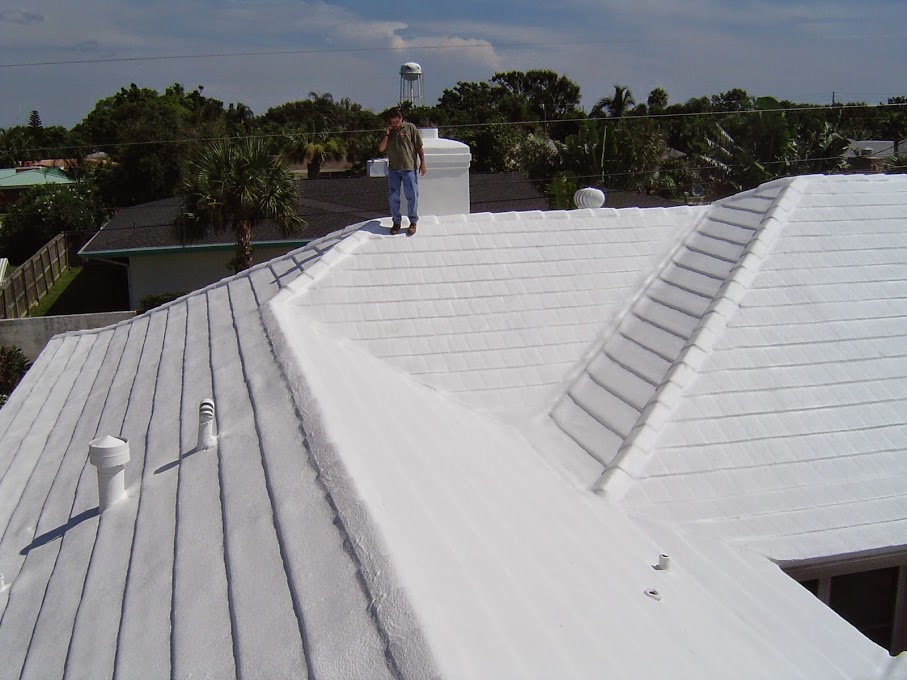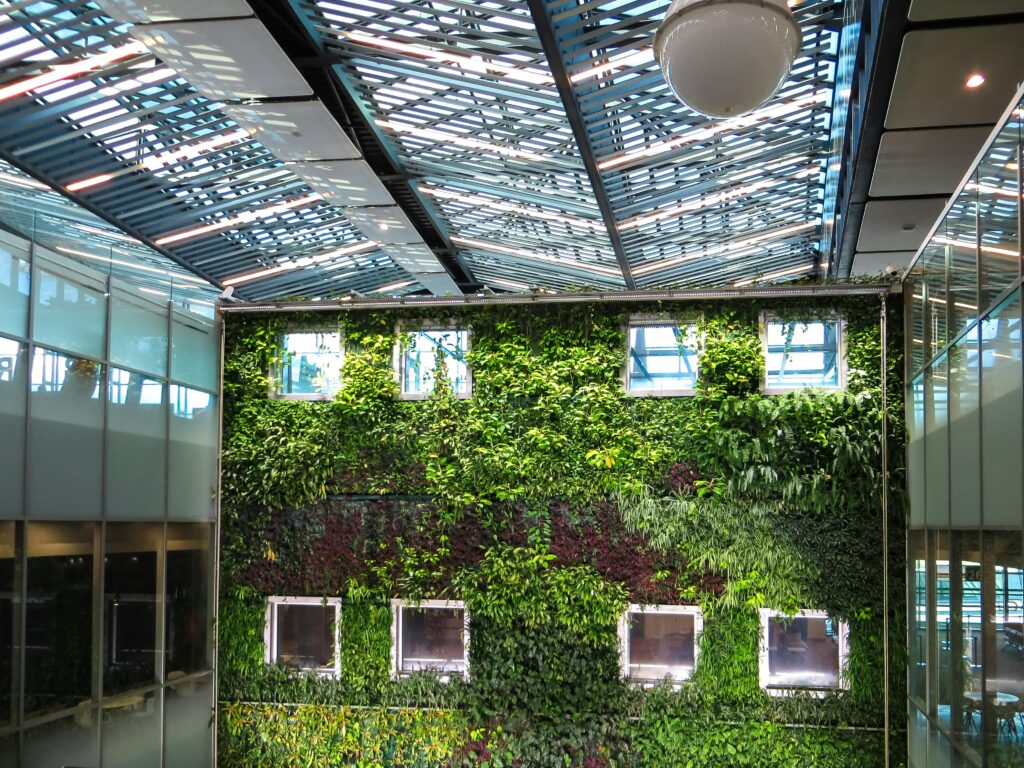APRIL 28, 2024 Published.
As urban heat island effects intensify, rooftops are increasingly seen as a key tool to break the vicious cycle between air conditioning and rising outdoor temperatures. But among the popular solutions—cool roofs, green roofs, and solar roofs—which one is the most effective in cooling down our cities?
Blazing sunlight scorches dense high-rises, while scorching asphalt radiates heat, and even the breeze feels like hot air… Summers are getting hotter each year. In the U.S., heat waves have increased from twice a year in the 1960s to six times annually today. The heat island effect is making urban summers unbearable. As air conditioning usage soars, energy consumption rises and outdoor temperatures increase, creating a vicious cycle.
To disrupt this cycle, many governments are promoting cool roofs, green roofs, and solar roofs—solutions that promise not only lower electricity bills and government subsidies but also reduced urban heat. But are these roofs all equally effective? Which one actually helps the most in fighting extreme heat?
Cool Roofs: A Practical Choice with High Cooling Potential
According to a 2023 study published in Geophysical Research Letters by University College London, cool roofs—those painted white or coated with reflective material—outperform green and solar roofs in combating urban heat.
Researchers used computer simulations of Greater London’s two hottest days in the summer of 2018 (reaching 35.6°C) to evaluate the impact of various interventions: air conditioning, cool roofs, solar roofs, green roofs, and increased tree coverage. The results showed that widespread adoption of cool roofs could lower the average outdoor temperature by 1.2°C, with some areas experiencing drops as much as 2°C.
In comparison, increasing vegetation or installing solar panels only cooled temperatures by an average of 0.3°C and might even raise humidity, making the heat feel worse. Green roofs could reduce daytime temperatures by about 0.5°C, but their nighttime heat retention nearly cancels out any cooling benefits.
Backed by U.S. Data: Cool Roofs Cut Energy Use the Most
A 2023 U.S. Department of Energy study conducted at the Argonne National Laboratory also confirmed similar findings. Using weather data from Chicago in August 2021, the research measured how the three types of roofs affected building temperatures and cooling demand.
Results showed that during the hottest hours of the day, cool roofs reduced average temperatures by 1.5°C, green roofs by 1.2°C, and solar roofs by just 0.6°C. Cool roofs also reduced air conditioning energy use the most—by up to 16.6%, followed by green roofs (14%) and solar roofs (7.6%).
Day and Night: Cool Roofs Keep Heat Out Around the Clock
As the sun sets, rooftops typically release stored radiation into buildings, raising indoor temperatures. But cool roofs don’t have this problem because they reflect rather than absorb solar energy. According to Earth.org, cool roofs are defined by the U.S. Department of Energy as “roofs that reflect more sunlight and absorb less heat than standard roofs.”
From an economic standpoint, cool roofs are the most cost-effective option. According to Epic Energy, any type of roofing material can be made into a cool roof by applying a reflective coating. The cost ranges from USD 16 to 32 per square meter. Green roofs, by contrast, require professional installation and often a complete roof overhaul, with costs as high as USD 107 per square meter—and they require ongoing maintenance.
Green Roofs: Ecological Value and Urban Beauty
Despite their higher cost, green roofs offer irreplaceable ecological benefits. Vegetation reduces stormwater runoff, purifies the air, and creates micro-habitats for urban wildlife. These rooftop gardens also offer a peaceful, scenic retreat from urban stress.
Take Chicago as an example, a city actively promoting green roofs—it already has over 300 buildings with green roofs, covering more than 3 million square feet.
Solar Roofs: Energy Benefits, But Less Cooling
Although solar panels aren’t technically a roofing material, they play a critical role in boosting a building’s energy efficiency. University College London’s study found that large-scale deployment of solar roofs could provide enough electricity to power most indoor air conditioning needs. For households, solar panels help offset energy costs and often qualify for government subsidies.
In fact, Tesla offers a genuine solar roof where the shingles themselves are made of solar cells—but the cost puts it out of reach for most homeowners.
Policy Support: Making Cool Roofs the New Norm

Despite the known benefits, cool roofs are still far less common than traditional dark-colored roofing materials. To address this, Los Angeles became the first U.S. city in 2015 to mandate cool roofs for all new residential buildings and offered subsidies to homeowners. “Even though public awareness of cool roofs is growing, widespread adoption still relies heavily on municipal building codes,” said Vivek Shandas, a Portland State University expert on urban heat islands.
In conclusion, while green and solar roofs each offer unique environmental and energy benefits, research consistently shows that cool roofs stand out for their superior ability to reduce urban temperatures and cooling energy demands. As cities continue to battle rising heat and seek sustainable solutions, adopting cool roof technologies—especially when supported by policy incentives and public awareness—may prove to be the most practical and impactful step forward.
